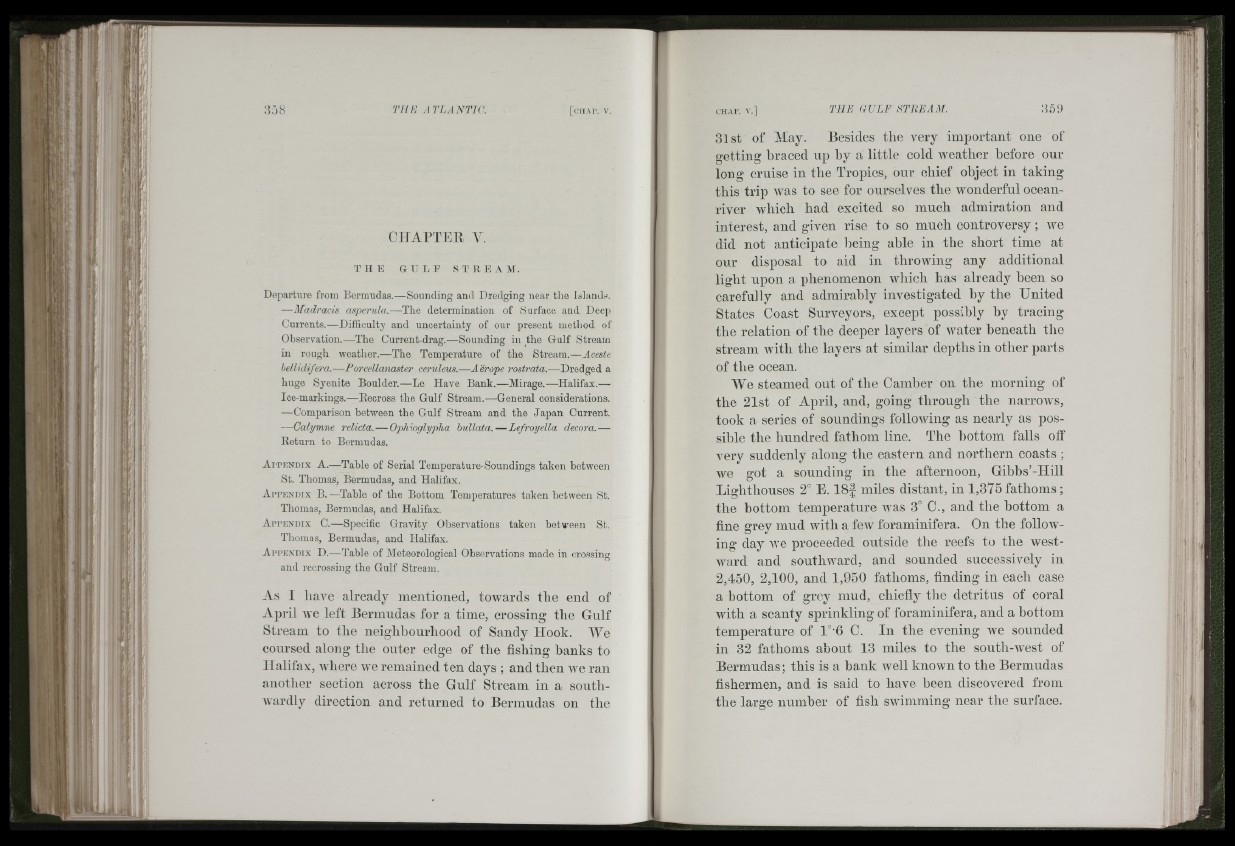
B'1'
à
'S'
La..
— a ii'
358
ClfAPTEB Y.
T II E G TI Ii F S T 11 E A IM.
Departure from Lermudas.—Sounding aud Dredging near tlie islands.
—Madracis asperida.—The determination of Surface and Deep
Currents.—Difficulty and uncertainty of our present metliod of
Observation.—Tlie Current-drag.—Sounding iiiffie Gulf Stream
in rough weatlier.—The Temperature of the Stream.—Aceste
hellidifera.— Porcellanaster ceruleus.—Aerope rostrata.—Dredged a
huge Syenite Boulder.—Le Have Bank.—Mirage.—Halifax.—
Ice-markings.—Eecross the Gulf Stream.—General considerations.
—Comparison between the Gulf Stream and the Japan Current.
•—Calymne relicta.-— Opdiioglypha hullata.— Lefroyella decora.—■
Return to Bermudas.
Appendix A.—Table of Serial Temperature-Soundings taken between
St. Thomas, Bermudas, and Halifax.
Appendix B. —Table of the Bottom Temperatures taken hetween St.
Thomas, Bermudas, and Halifax.
Appendix C.—Specific Gravity Observations taken between St.
Tliomas, Bermudas, and Halifax.
A p p e n d i x D.—Table of Meteorological Observations made in crossing
and recrossing the Gulf Stream.
As I have already mentioned, towards the end of
April we left Bermudas for a time, crossing the Gulf
Stream to the neighhourhood of Sandy Hook. We
coursed along the outer edge of the fishing banks to
Halifax, where we remained ten days ; and then we ran
another section across the Gulf Stream in a southwardly
direction and returned to Bermudas on the
1 j# : . Sil ;
31st of May. Besides the very important one of
getting braced up hy a little cold weather before our
long cruise in the Tropics, our chief object in taking
this trip was to see for ourselves the wonderful ocean-
river which had excited so much admiration and
interest, and given rise to so much controversy ; we
did not anticipate lieing able in the short time at
our disposal to aid in throwing any additional
light npon a phenomenon which has already heen so
carefully and admirably investigated by the United
States Coast Surveyors, except possibly by tracing
the relation of the deeper layers of water beneath the
stream with the layers at similar depths in other parts
of the ocean.
We steamed out of the Camber on the morning of
the 21st of April, and, going through the narrows,
took a series of soundings following as nearly as possible
the hundred fathom line. The bottom falls off
very suddenly along the eastern and northern coasts ;
we got a sounding in the afternoon, Gibbs’-Hill
Lighthouses 2° E. 1 8 | miles distant, in 1,375 fathoms ;
the bottom temperature was 3° C., and the hottom a
fine grey mud with a few foraminifera. On the following
day we proceeded outside the reefs to the westward
and southward, and sounded successively in
2,450, 2,100, and 1,950 fathoms, finding in each case
a bottom of grey mud, chiefly tlie detritus of coral
with a scanty sprinkling of foraminifera, and a bottom
temperature of l°-6 C. In the evening we sounded
in 32 fathoms about 13 miles to the south-west of
Bermudas; this is a bank well known to the Bermudas
fishermen, and is said to have been discovered from
the large numher of fish swimming near the surface.
' i "iiil Hi <■:,